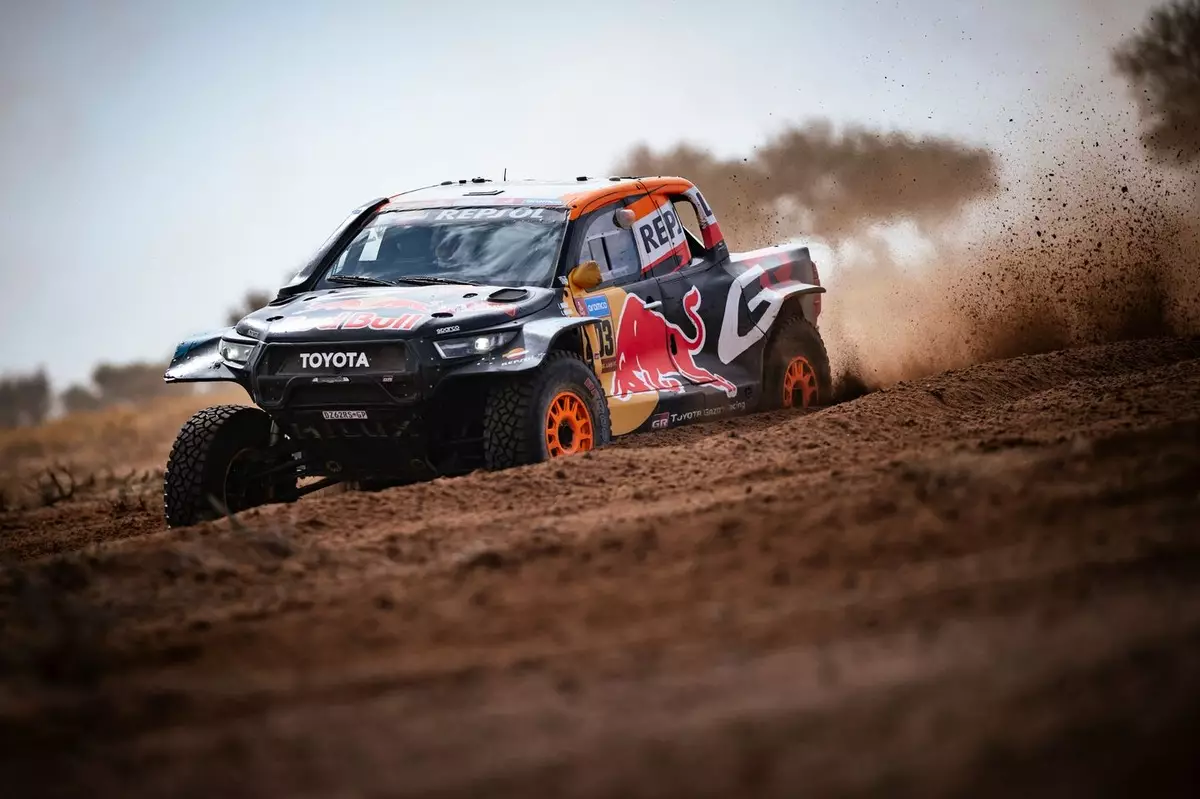The Dakar Rally is renowned for not only testing the skill and endurance of its competitors but also for its unpredictability. Stage 7, which took place around Al Duwadimi, exemplified these characteristics, as competitors were confronted with altered conditions and unexpected challenges. Lucas Moraes, driving for Toyota, secured a remarkable victory, pushing through mechanical setbacks and intense competition.
Stage 7 consisted of a 418-kilometer course, shorter than some previous legs, reflecting an intentional adjustment by the organizers. This decision was not merely logistical, as the deployment of medical helicopters became a priority due to the harsh conditions and the sudden bout of rain that complicated the route. Such weather anomalies transformed the already treacherous terrain into an even more formidable challenge for drivers and teams.
As competitors advanced towards the 158-kilometer mark, an unanticipated error in the roadbook led many drivers astray, causing a significant shake-up in the rankings. Dakar officials took the prudent step of neutralizing a 20-kilometer segment of the course, realigning the competitors and re-establishing order within the chaotic landscape where navigation is critical.
Lucas Moraes’ win on this stage was not just a testament to his driving skills but also a remarkable recovery from a previous day’s mechanical issue that had cost him over three hours. His ability to maneuver through the treacherous terrain in his Toyota Hilux resulted in a substantial 7m41s lead over the competition, showcasing both agility and resilience under pressure.
Moraes’ performance underscored the importance of adaptability in the Dakar Rally; a racer might endure setbacks one day but could turn the tide entirely the next. His triumph also illuminated how a well-prepared strategy can lead to success, provided one can effectively respond to and overcome unforeseen challenges.
The Competition Heats Up
While Moraes celebrated his victory, the stage’s volatility allowed others, such as Mattias Ekstrom from Ford, to gain significant insights into race dynamics. Initially leading at the day’s first checkpoint, Ekstrom faced obstacles that saw him slip to fourth position at one point. However, as the pace intensified and the stage unfolded, he moved back up, ultimately finishing second—a notable achievement that served to bolster the momentum for the Ford team.
Close behind, Mitch Guthrie Jr. rounded off the Ford team’s strong performance with a solid third position, exemplifying the competitive spirit that defines the Dakar. The performance of these drivers illustrated how quickly fortunes can change in rally scenarios, where a well-finalized strategy can yield success.
The Ranking Shake-Up: Lategan’s Struggles
Despite the intense navigation and contingency strategies implemented by most teams, Henk Lategan, the overall leader entering the stage, encountered substantial difficulties. His 15-minute delay saw him tumble down to fifteenth place in the stage classification, dramatically tightening the race for the overall lead. The closeness of his competitors, especially Yazeed Al-Rajhi, indicated that even a marginal performance on the day could greatly impact the standings.
As a result of Lategan’s missteps, the margins narrowed significantly across the leaderboard. With the top competitors like Ekstrom and five-time winner Nasser Al-Attiyah now within striking distance, the rally promised an exhilarating conclusion. The fight for the ultimate title was far from over, and the stage conclusively underscored that every second counts in rally racing.
The events of Stage 7 highlighted the multifaceted nature of the Dakar Rally—skill, strategy, and even luck can determine the outcome at any moment. The surprise rain and unexpected roadbook errors added layers of complexity, challenging drivers to adapt dynamically. Moraes’ victory not only showcased his talent but also served as a compelling reminder of how setbacks can be transformed into triumphs, making the overall rally experience more thrilling for competitors and spectators alike. As the race moves forward, the shifts in positions present a captivating narrative that will keep fans on the edge of their seats.

